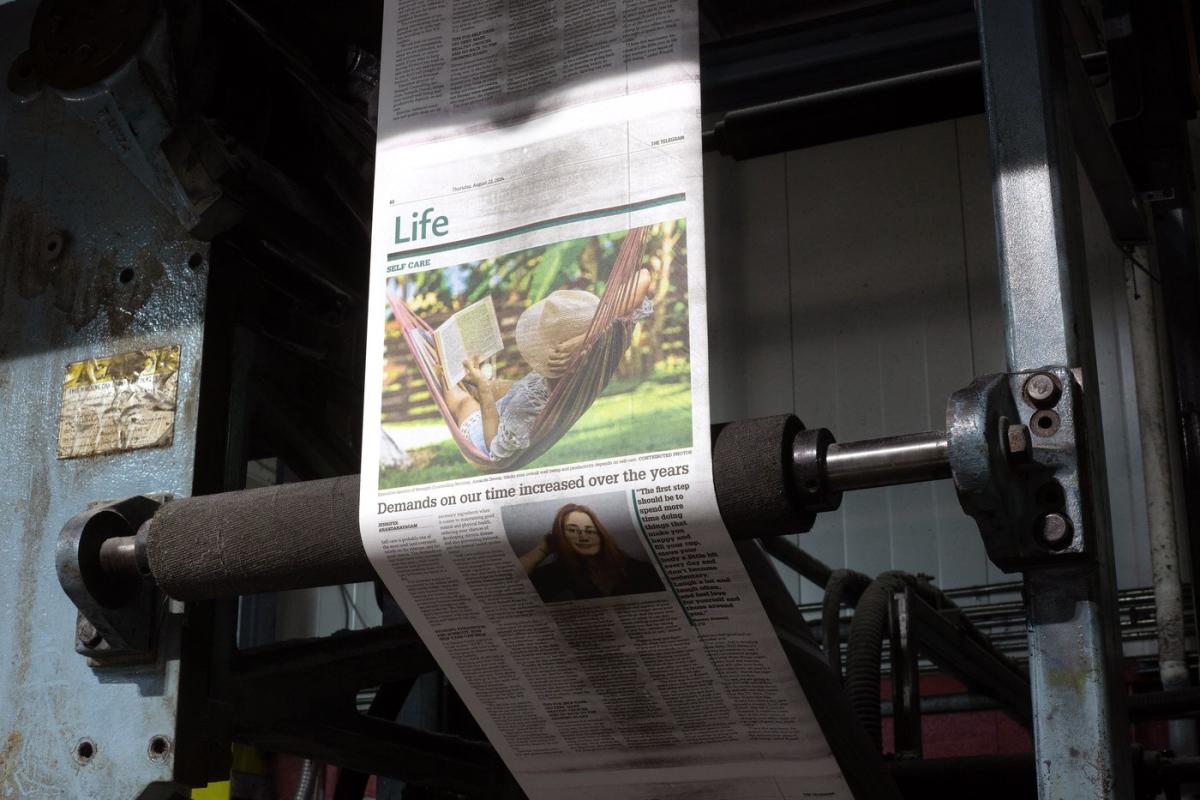ST. JOHN’S, NL — The final edition of The Telegram newspaper hit stores in St. John’s, NL, on Saturday, marking the end of a 145-year run and the move to a weekly print version with daily online articles.
The People’s Paper, as it is also known, was part of the SaltWire Network, which was sold to Postmedia for $1 million in a deal approved earlier this month. The sale did not include The Telegram’s printing plant – the last of its kind in the province – which has left several other newspapers scrambling to find a new plan.
On Friday night, the plant was fired up for what may have been the very last time to print the final Daily Telegram. The building is for sale for $5.9 million, and if no one comes forward to buy it, it’s lost forever.
Nicole Penney of Memorial University’s Folklore and Language Archives said people have long relied on print newspapers to catalogue local life and family histories, and the carefully assembled folders of documents people bring to the archives are always stuffed with Telegram clippings.
These folders and the stories they contain help trace the social history of the province, she said.
“When someone gets a newspaper, they find a cool story, cut it out, it has something to do with family, friends or whatever, and bring it to us. And if it has something to do with the culture of Newfoundland and Labrador, we embrace it, that’s our mission,” Penney said in an interview.
“The option now would be to print the story online and bring it with you. And how many people have a printer at home these days?”
Like the rest of the country, Newfoundland and Labrador has seen many local and regional newspapers close over the past decade. When SaltWire bought The Telegram from Transcontinental Inc. in 2017, it acquired about a dozen other newspapers published in communities from Happy Valley-Goose Bay in Labrador to Port-aux-Basques, a small former fishing village on the southwestern tip of Newfoundland.
Only The Telegram and two free weeklies – Newfoundland Wire and Central Wire – were still published earlier this week, according to SaltWire’s website, although the most recent edition on the site is dated December 2023.
With the switch of “The Telegram” to a weekly print edition, St. John’s is, along with Fredericton, the only provincial capital that does not publish an English-language newspaper at least five days a week.
Meanwhile, Postmedia’s acquisition of the SaltWire Network has left several independent publications in Newfoundland and Labrador reeling, including The Shoreline newspaper. The paper serves much of southeastern Newfoundland, including many rural communities on the island’s east coast, and used The Telegram’s St. John’s printing facility, which Toronto-based Postmedia did not buy.
According to a note by publisher Craig Westcott on the newspaper’s front page Friday, The Shoreline will now have to be printed elsewhere in Atlantic Canada.
“We hope the change is only temporary,” Westcott wrote. “We are working hard to rebuild newspaper printing in this province, both to print our own newspapers and to supply other small publishers throughout Newfoundland and Labrador.”
Joan Sullivan is also looking for a new printer for the Newfoundland Quarterly, a 123-year-old arts and culture magazine that she edits and runs. She said she is concerned about the significant freight costs that each publisher has to bear when sending their newspapers by plane or ship.
“These newspapers were created for a reason … people want these newspapers,” Sullivan said in an interview. “Print stays where it is. People keep them, people cherish them and people read them over and over again.”
Sullivan, too, is concerned about the cultural impact of losing a major daily newspaper, but also the many ephemera the St. John’s plant produces, she said. Those flyers, brochures, signs and advertisements all become historical markers, reflecting the values and styles of the era in which they were printed, she added.
On Friday evening, some Telegram reporters shared photos on social media of the press in action on what is believed to be the last print run. Some photos showed the pages of the last daily Telegram print edition running through the presses. Others showed factory workers carefully checking the print.
The next morning, several people at a Sobeys grocery store in St. John’s had the newspaper in their shopping carts. A cashier confirmed that copies sold out quickly.
The bold headline above the fold was clearly visible from the other end of the store: “This is not the end for us.”
The first weekly print edition of the Telegram is expected on Friday. The daily news will continue online.
This report by The Canadian Press was first published August 24, 2024.
Sarah Smellie, The Canadian Press




